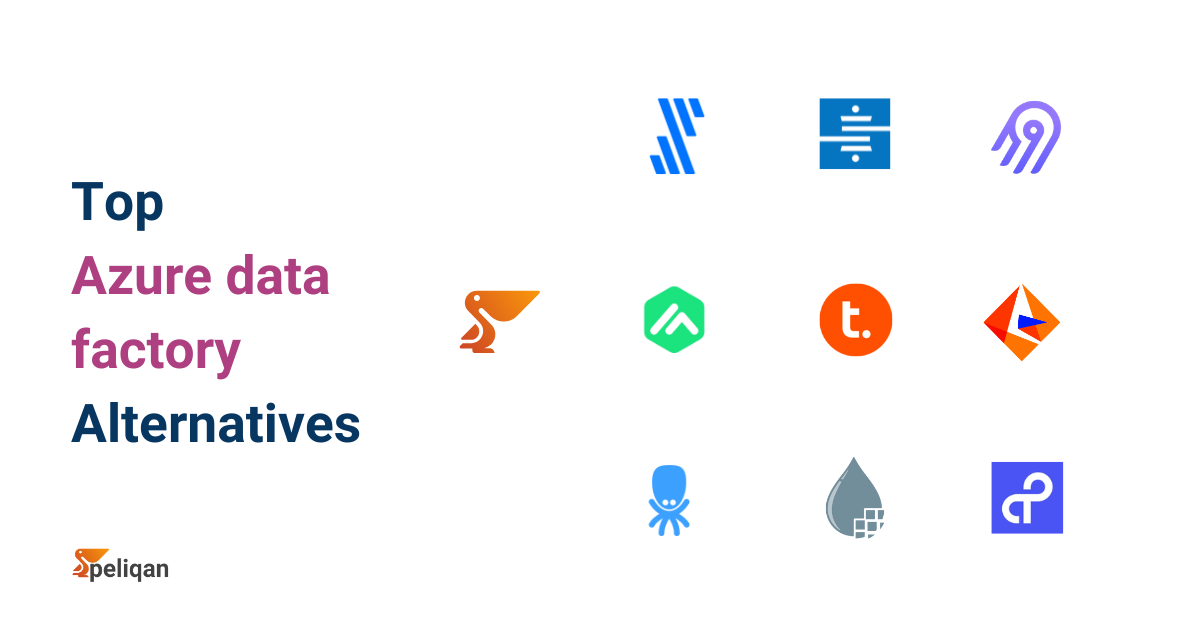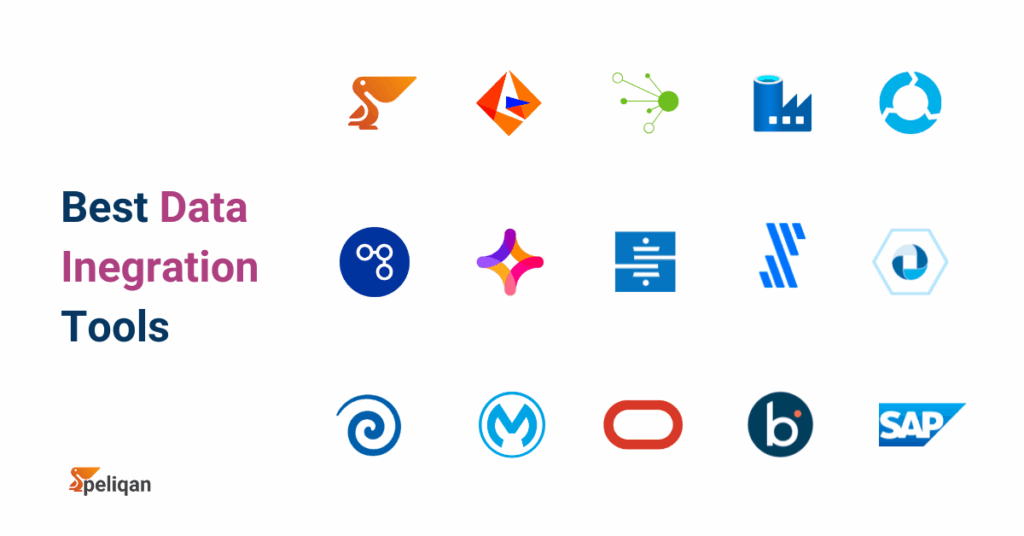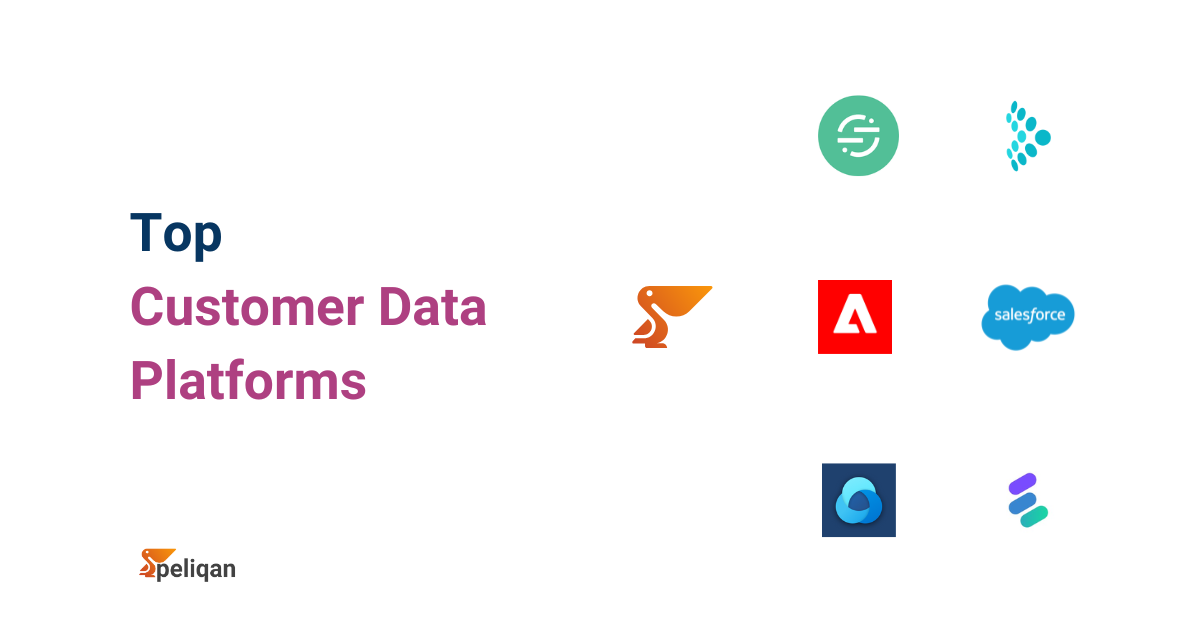Peliqan.io is an all-in-one data platform for business teams, startups, scale-ups and IT service companies – no data engineer needed. Connect to multiple databases, warehouses, and SaaS applications for a centralized view of your data.
Peliqan’s intuitive spreadsheet interface makes it easy to explore and analyze data, even without coding experience. Ensure data quality and compliance with built-in lineage and cataloging features. Ideal for business teams and startups seeking a user-friendly, all-in-one solution.
Key Features:
- Spreadsheet-like UI: Intuitive data exploration and manipulation for business users
- Low-code development: Build interactive data apps with minimal coding expertise
- Data lineage and cataloging: Streamlined data governance and quality assurance
- Multi-source integration: Connects to databases, warehouses, and SaaS applications
2. Informatica PowerCenter
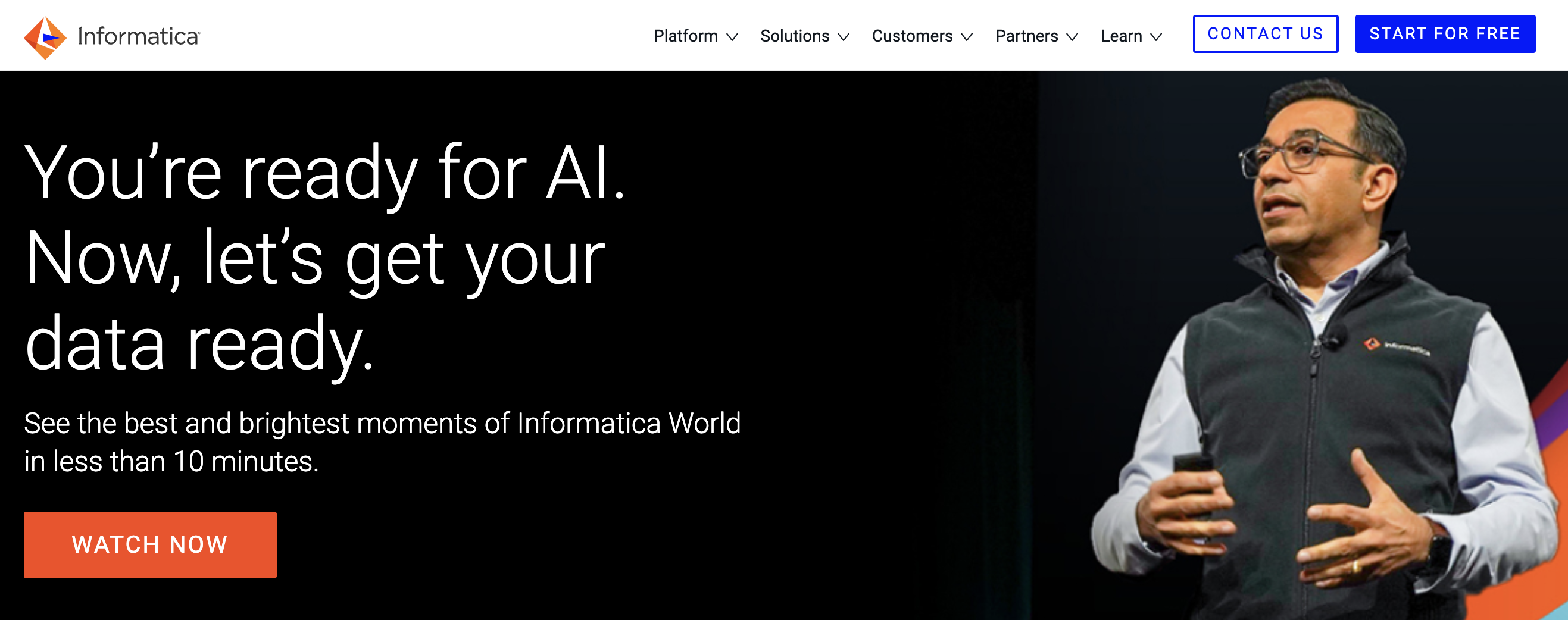 Informatica PowerCenter tackles demanding integration challenges with its comprehensive set of tools. Profile, cleanse, mask, and govern your data effectively with built-in data quality features.
Informatica PowerCenter tackles demanding integration challenges with its comprehensive set of tools. Profile, cleanse, mask, and govern your data effectively with built-in data quality features.
Integrate with diverse on-premises and cloud data sources, including AWS, Azure, and Hadoop. Enjoy high security, scalability, and reliable performance for large-scale enterprise deployments. Ideal for organizations with complex data integration needs and a focus on data governance.
Key Features:
- Comprehensive functionality: Data profiling, quality, masking, lineage, governance, and cataloging
- Cloud and big data integration: Supports AWS, Azure, Google Cloud, Snowflake, Databricks, and Hadoop
- High security and scalability: Reliable data availability and performance for large-scale projects
3. Talend

Talend’s open-source platform empowers developers and data engineers to build tailored data pipelines. Perform various data operations, including data ingestion, transformation, and enrichment.
Integrate seamlessly with leading cloud and big data technologies. Leverage the active Talend community for support and collaboration. Ideal for organizations seeking a customizable, open-source solution with a vibrant community.
Key Features:
- Cloud-native platform: Agile and scalable solution for modern data architectures
- Data quality and governance: Ensures data accuracy and reliability across the organization
- Cloud and big data integration: Integrates seamlessly with leading cloud and big data technologies
4. Microsoft Azure Data Factory
Leverage the power of Azure with its native data integration solution, Azure Data Factory. Create, manage, and monitor complex data flows in a fully managed environment.
Integrate seamlessly with other Azure services like Azure Synapse Analytics and Azure Databricks for a unified data platform. Benefit from high security, compliance, and scalability within the Azure ecosystem. Ideal for organizations already invested in Azure seeking a native and managed integration solution.
Key Features:
- Rich data pipeline orchestration: Creates, manages, and monitors complex data flows
- Integrated with Azure services: Seamless integration with other Azure offerings for a unified data platform
- High security and compliance: Ensures data protection and adheres to industry standards
5. Celigo
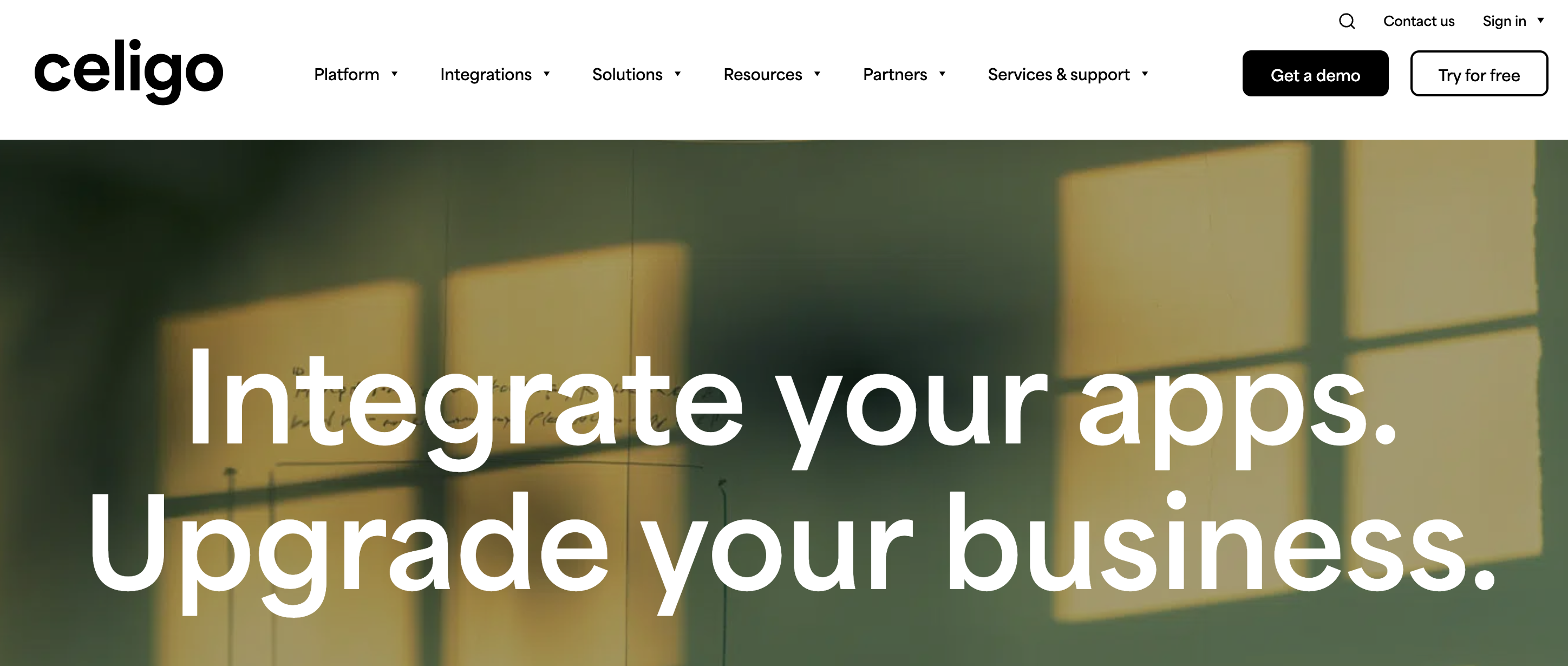
Celigo’s Integration Platform as a Service (iPaaS) empowers both IT professionals and business users to automate critical business processes and seamlessly connect applications.
Whether you need to integrate legacy systems, synchronize data across cloud platforms, or automate complex workflows, Celigo provides a robust and user-friendly solution.
Key Features:
- Intuitive Interface: Visual drag-and-drop interface simplifies integration creation, even for non-technical users
- Business Process Automation: Automate repetitive tasks and workflows for increased efficiency
- Embedded Logic: Apply conditional logic within integrations for intelligent data routing and processing
6. SnapLogic
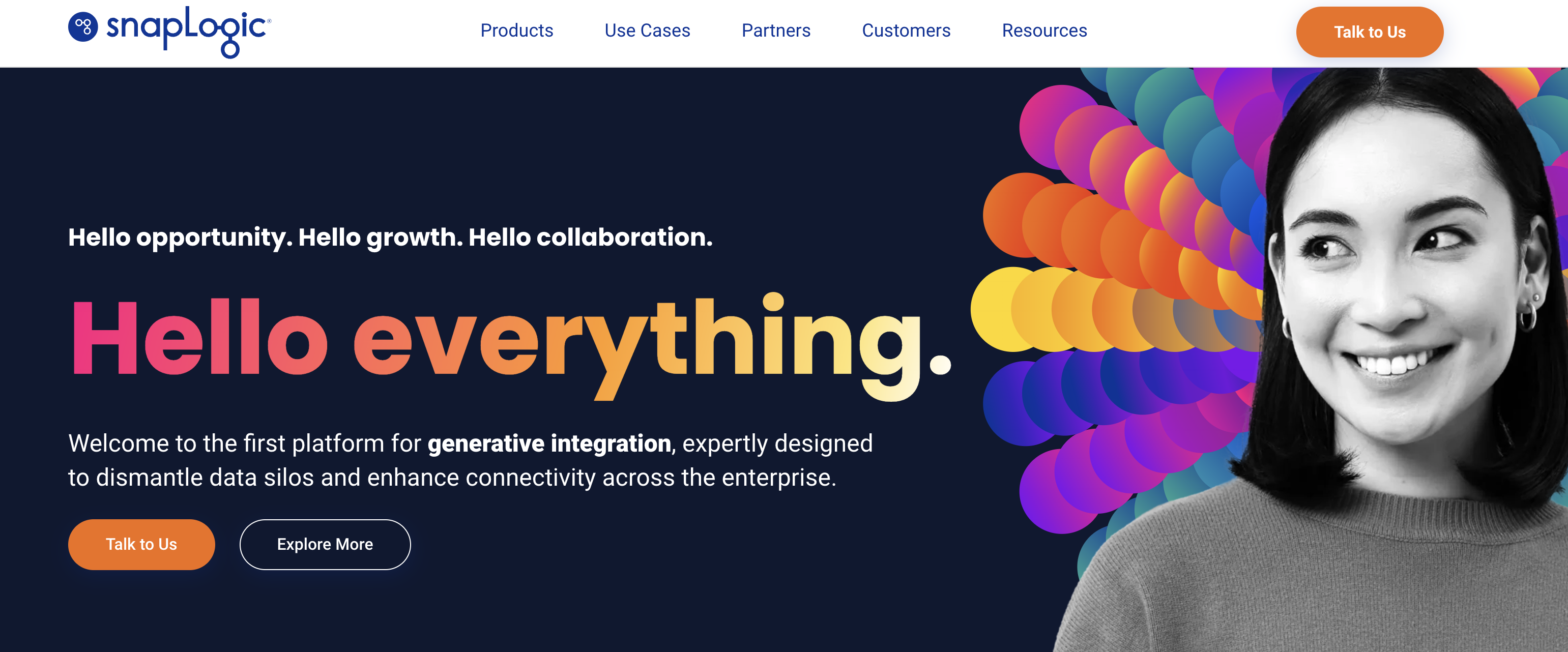
SnapLogic empowers business users and analysts with its visual interface and pre-built connectors. Connect to popular data sources like Salesforce, Google Cloud, and Amazon Redshift without coding expertise.
Build and manage integrations without relying on IT, fostering self-service data access and analysis. Ensure data quality and governance with built-in data cleansing and validation tools. Ideal for organizations seeking a user-friendly platform to empower business users with self-service data integration.
Key Features:
- Visual and intuitive interface: Low-code approach simplifies data integration for business users
- Agile and scalable: Quickly adapts to changing data needs and handles growing demands
- Data quality and governance: Ensures data integrity and adheres to compliance requirements
7. Jitterbit
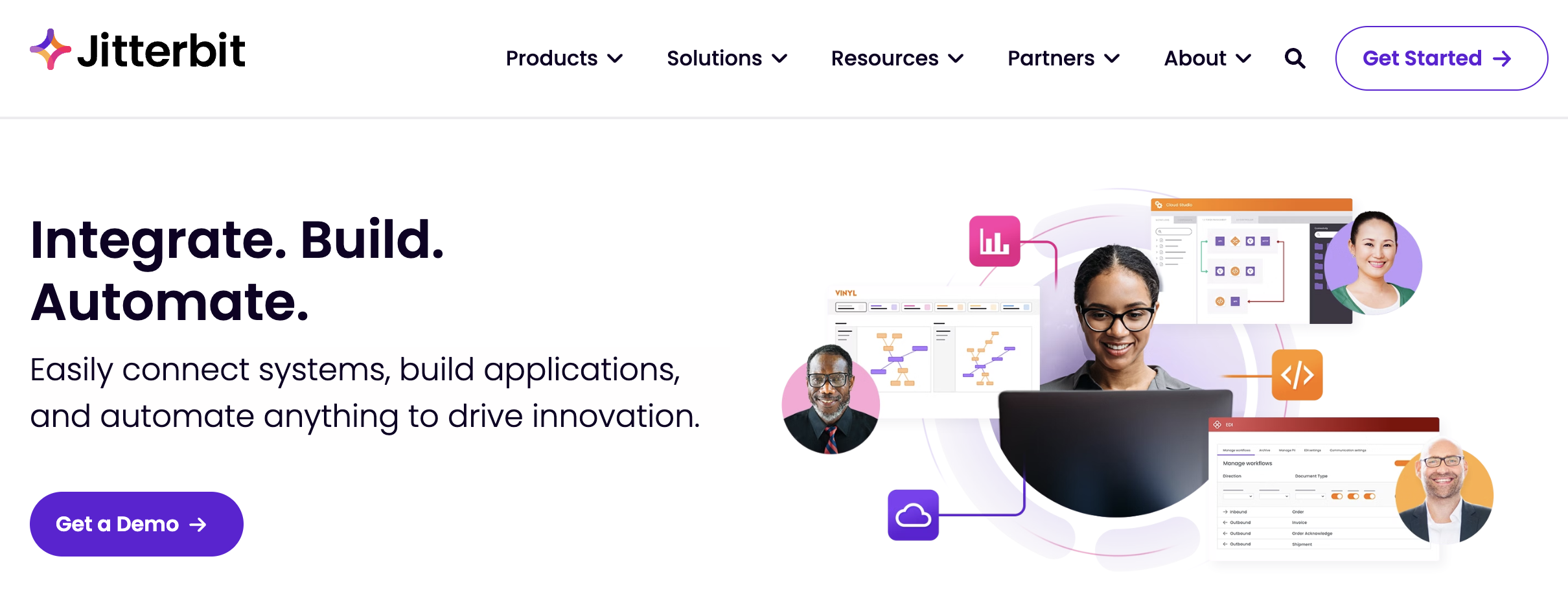
Jitterbit accelerates data integration with its intuitive interface and pre-built connectors. Integrate with leading cloud and on-premises data sources quickly and easily. Empower business users to connect applications and automate data flows with self-service capabilities.
Enjoy a scalable and agile platform that adapts to your evolving data volumes and integration needs. Ideal for organizations seeking a fast, user-friendly solution for cloud and on-premises data integration.
Key Features:
- Intuitive interface and pre-built connectors: Fast and efficient data integration setup
- Cloud and big data integration: Connects to leading cloud and big data technologies
- Scalability and agility: Adapts to evolving data needs and handles increasing data volumes
8. Stitch
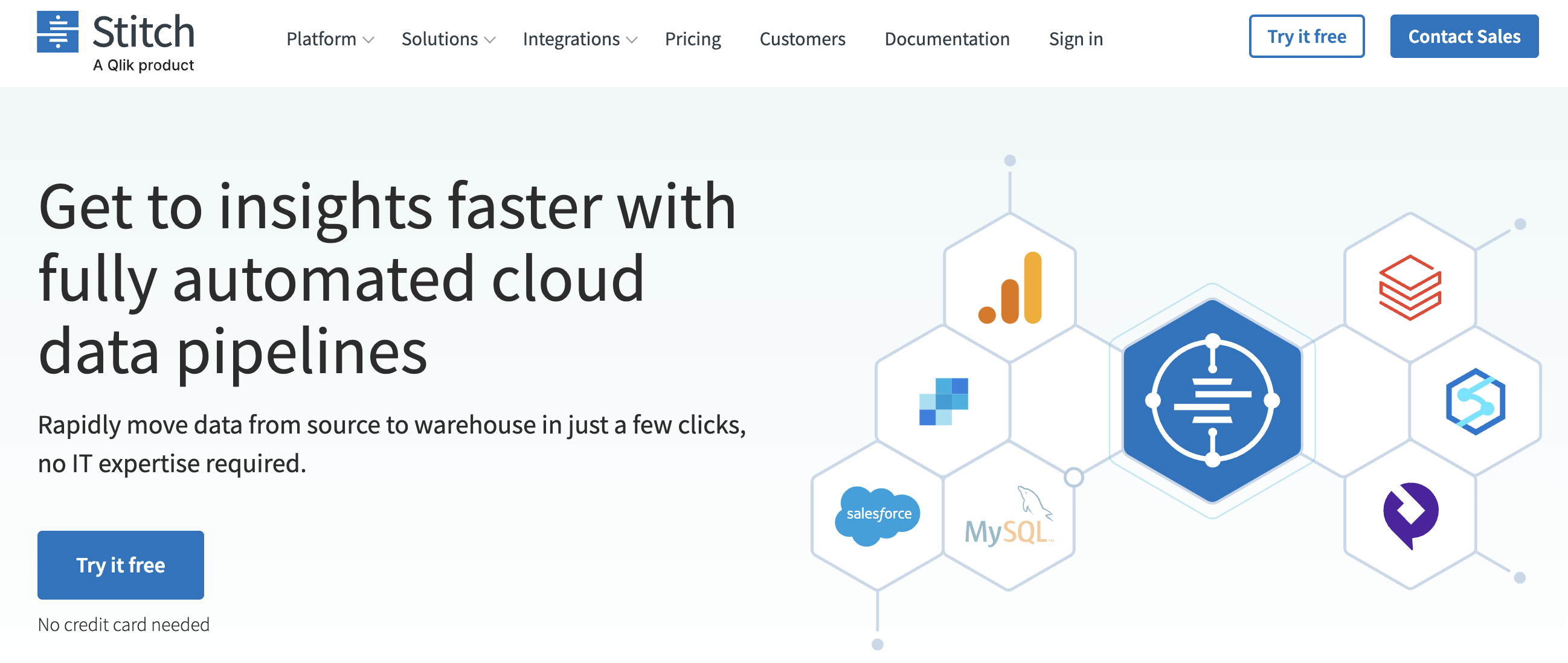
Stitch simplifies data loading from various sources to popular cloud data warehouses like Snowflake and Amazon Redshift. Automate data extraction and loading processes for minimal management overhead. Benefit from high security, compliance, and clear visibility into data flows with easy monitoring and support.
Ideal for businesses seeking a simple, automated, and reliable solution for loading data into their cloud data platforms.
Key Features:
- Straightforward data extraction and loading: Moves data from any source to popular cloud warehouses and data lakes
- Automated and scalable: Efficient data pipelines with minimal management overhead
- Easy monitoring and support: Provides clear visibility into data flows and readily available assistance
9. Fivetran
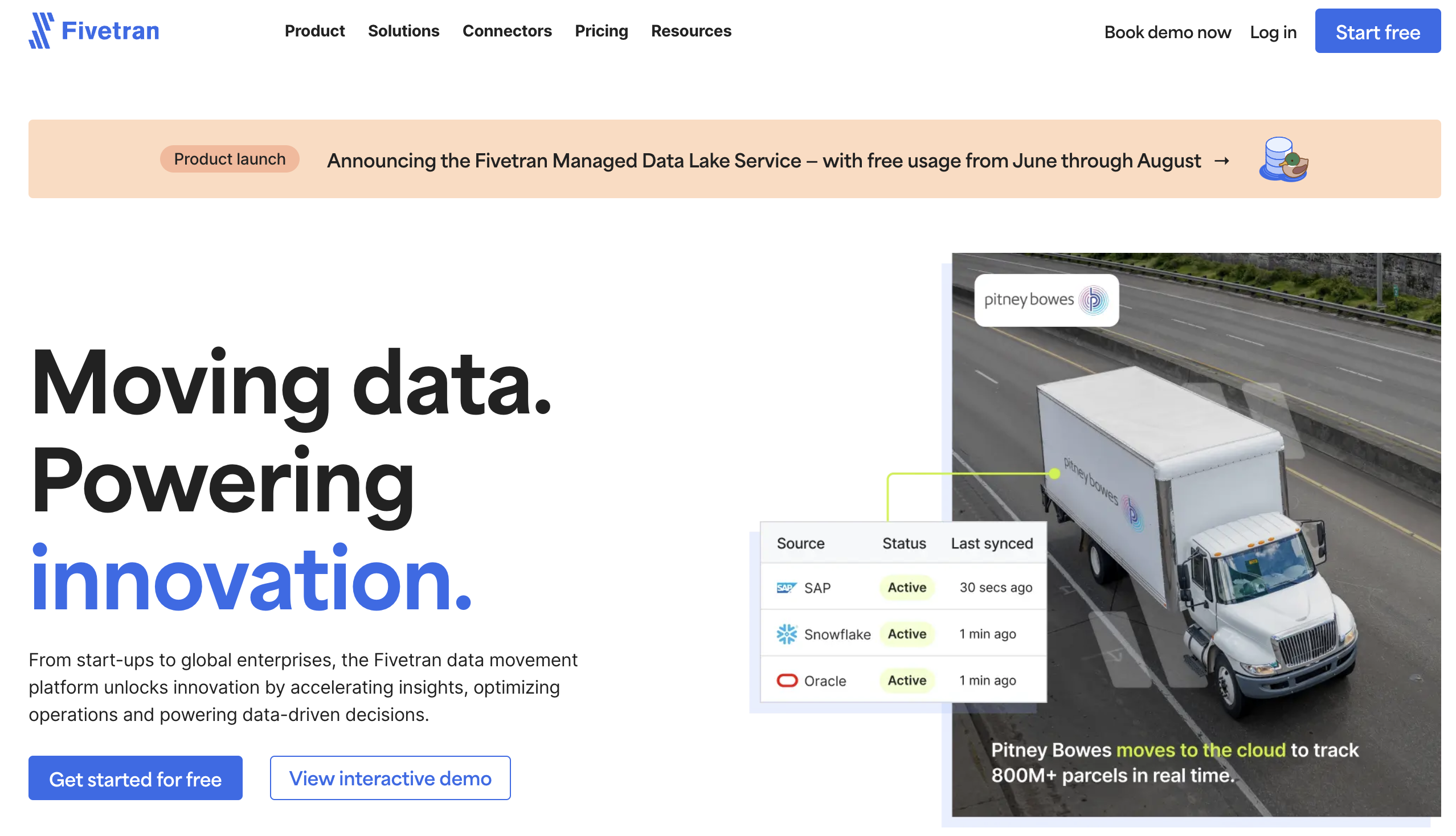
Maintain consistent and accurate data in your data warehouse with Fivetran’s automated data replication. Eliminate manual data pipelines and ensure reliable data transfer with high-fidelity accuracy.
Leverage the cloud-based platform for seamless integration with diverse cloud environments. Ideal for organizations prioritizing automated, reliable, and high-quality data replication for their data warehousing needs.
Key Features:
- Automatic data replication: Seamlessly keeps your data warehouse or data lake in sync with various sources
- Fast and reliable data transfer: Ensures efficient and accurate data movement
- Cloud-based and scalable: Adapts to growing data volumes and integrates seamlessly with cloud environments
10. IBM DataStage

Handle even the most demanding data integration challenges with IBM DataStage’s comprehensive capabilities. Manage diverse data sources, formats, and transformations effectively. Enjoy high security, scalability, and performance, making it ideal for large-scale enterprise deployments. Integrate seamlessly with leading cloud and big data technologies.
Empower developers with a robust development environment for advanced data manipulation. Ideal for large enterprises with complex data integration needs and a focus on security and performance.
Key Features:
- Comprehensive data integration capabilities: Handles diverse data sources, formats, and transformation needs
- High security, scalability, and performance: Designed for mission-critical enterprise deployments
- Cloud and big data integration: Leverages leading cloud and big data technologies
11. Pentaho
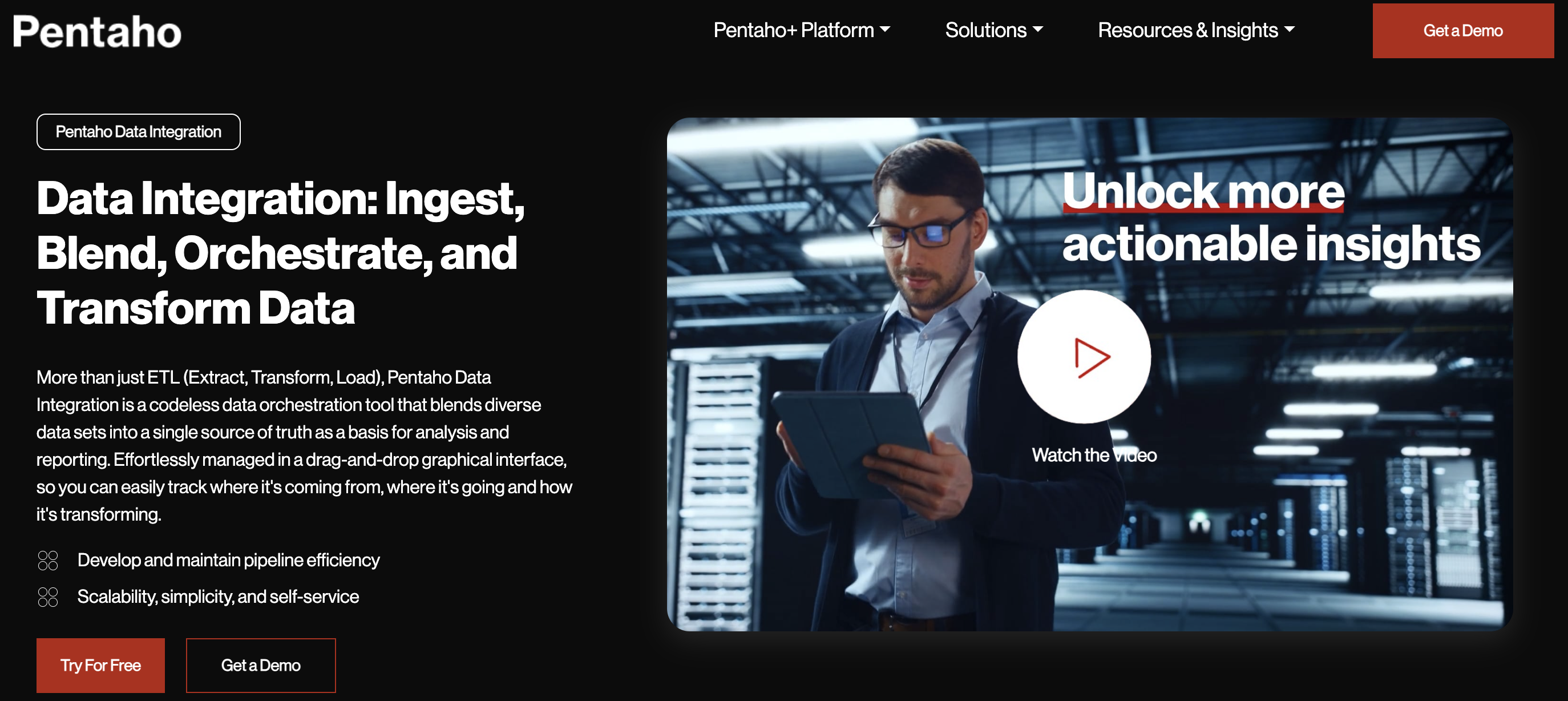
Craft customized data integration solutions tailored to your specific requirements with Pentaho. Ensure data quality, accountability, and traceability with data governance and lineage features. Integrate seamlessly with cloud and big data technologies.
Empower developers and data engineers with visual development tools for simplified pipeline creation and management. Ideal for organizations seeking a customizable, open-source solution with the flexibility to build unique integrations.
Key Features:
- Open-source and customizable: Tailored data integration solutions for specific requirements
- Data governance and lineage: Ensures data quality, accountability, and traceability
- Cloud and big data integration: Integrates seamlessly with various cloud and big data technologies
12. MuleSoft
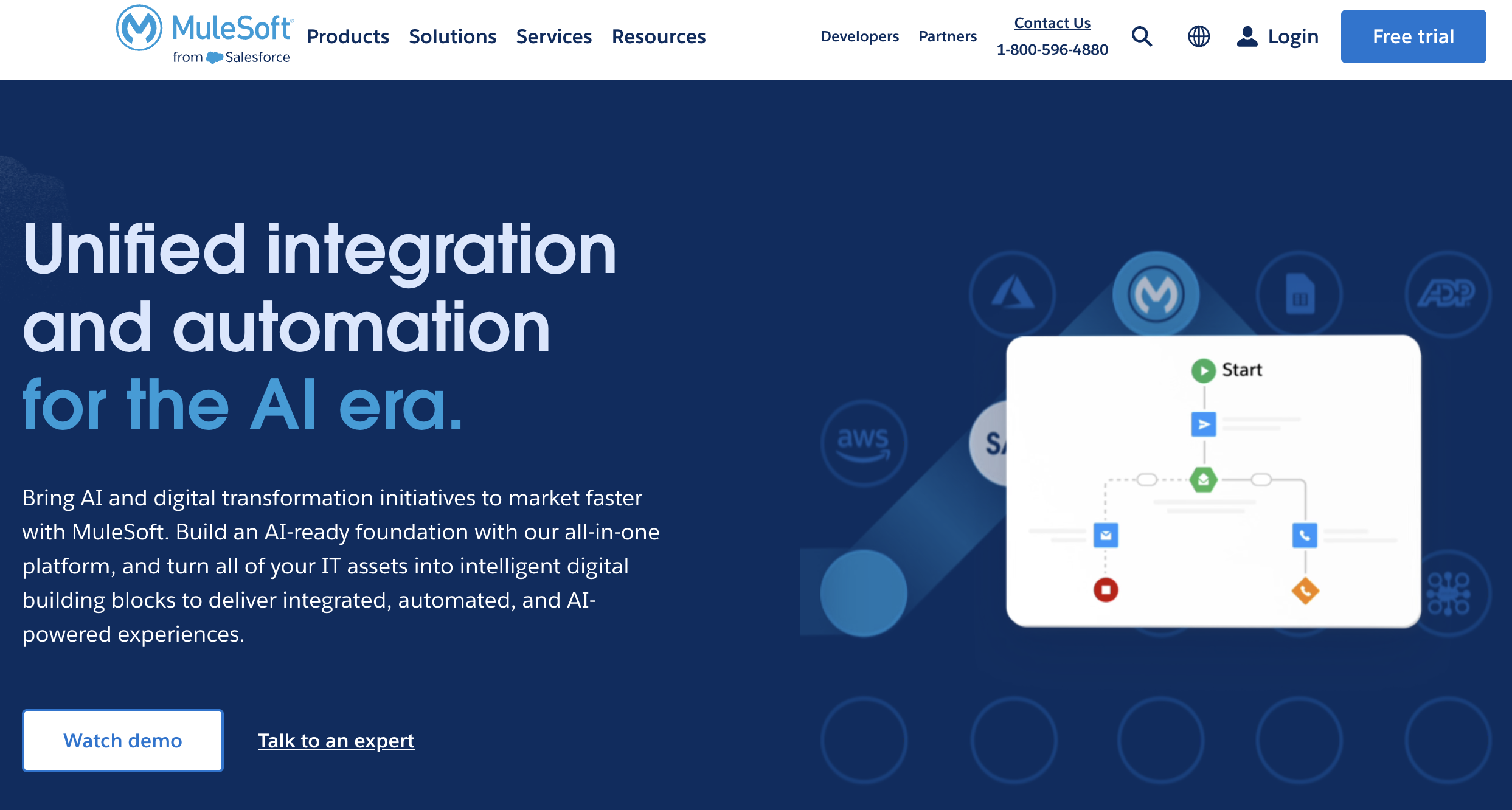
Simplify data integration through APIs and applications with MuleSoft’s user-friendly platform. Leverage low-code development to make integration accessible to a wider range of users, including business analysts and developers. Connect to diverse cloud and big data technologies like Salesforce and SAP.
Stay adaptable and scalable with a platform that grows with your needs. Ideal for organizations seeking a user-friendly platform to integrate data through APIs and applications, even without extensive coding expertise.
Key Features:
- API-centric approach: Simplifies data integration through APIs and application connectivity
- Low-code development: Makes integration accessible to a wider range of users
- Data integration: Connects to diverse cloud and big data technologies
13. Oracle Data Integrator
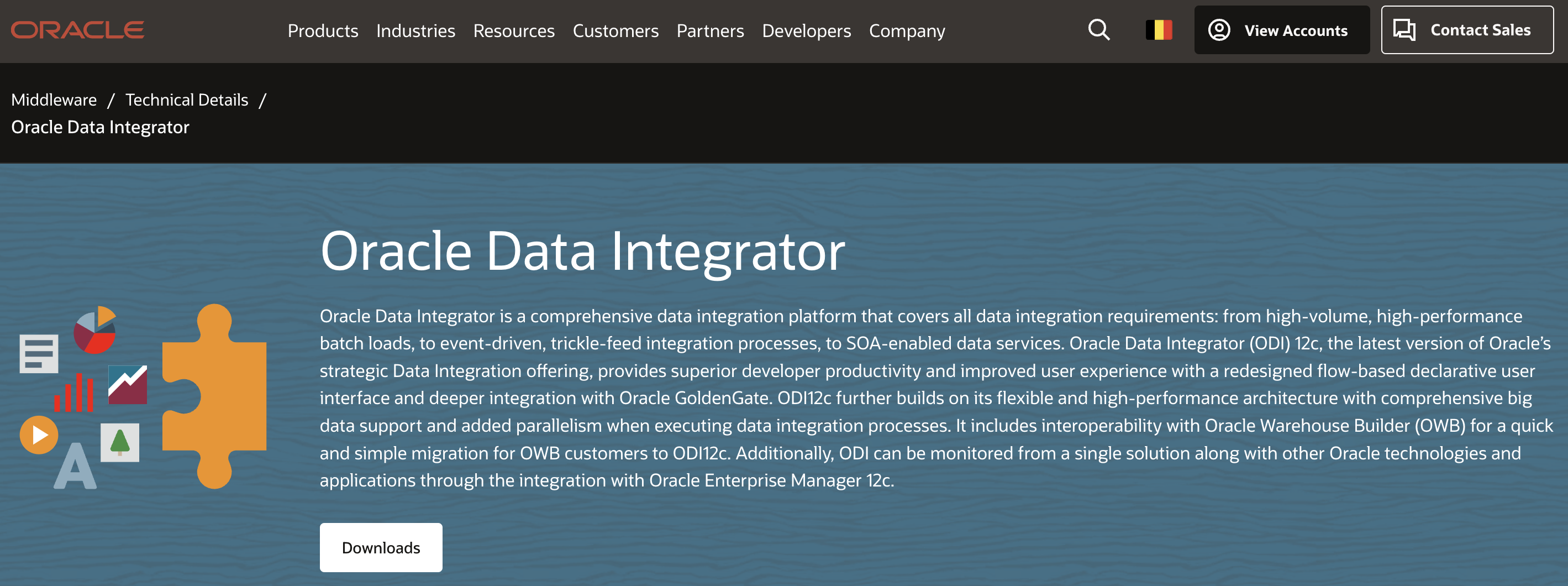
Ensure seamless integration within your Oracle ecosystem with Oracle Data Integrator. Benefit from its comprehensive data integration capabilities, high security, and performance, making it ideal for large-scale deployments within Oracle environments.
Ideal for organizations already using Oracle applications seeking a secure and powerful data integration solution tailored to their existing infrastructure.
Key Features:
- Optimized for Oracle environments: Seamless integration with other Oracle products and technologies
- Comprehensive data integration capabilities: Handles diverse data sources, formats, and transformations
- Data governance and lineage: Provides data quality, accountability, and traceability
14. Boomi
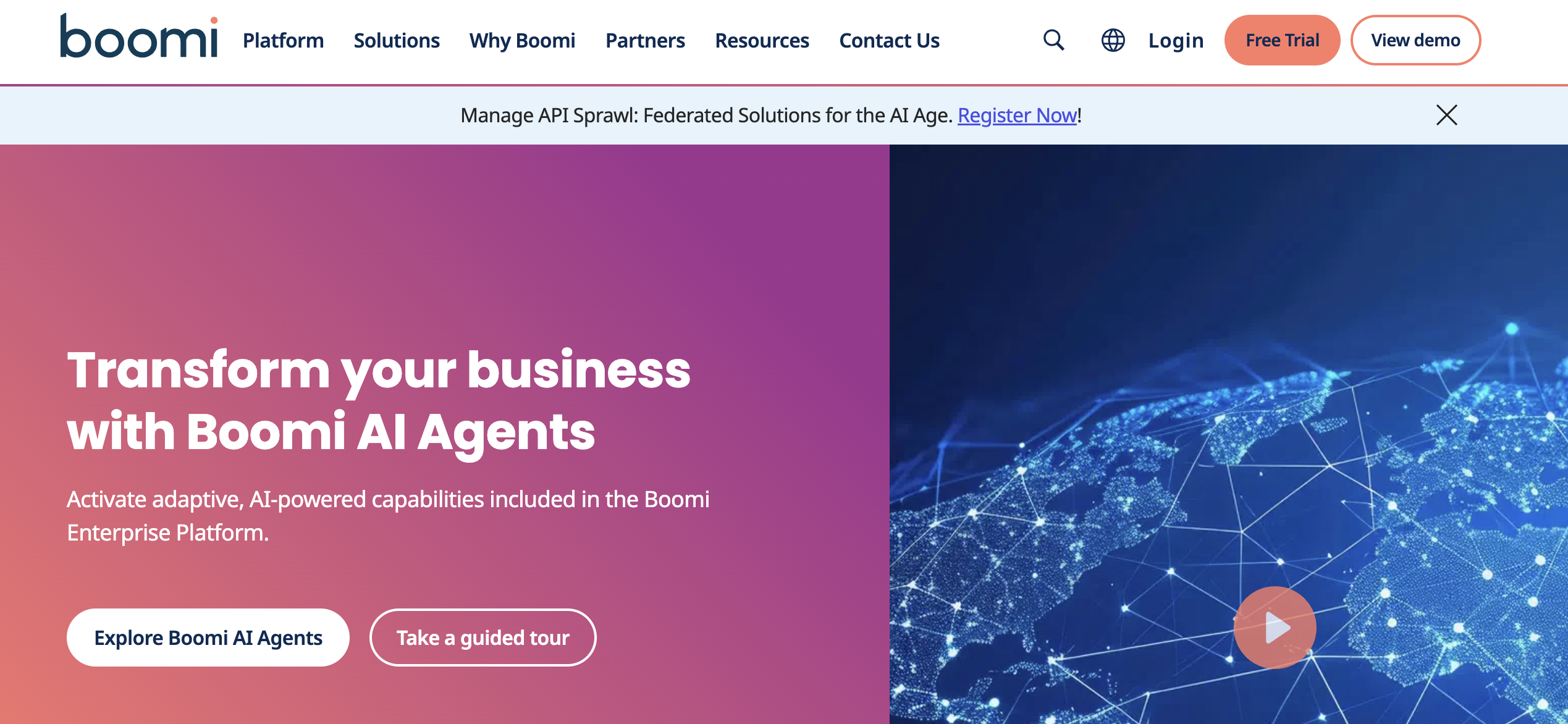
Boomi simplifies cloud-based data integration with its low-code visual designer and pre-built connectors. Quickly connect applications, partners, and customers through web services.
Integrate with popular ERP, CRM, and marketing automation tools like Salesforce, NetSuite, and HubSpot. Automate data flows and processes to improve efficiency and eliminate manual tasks. Ideal for businesses of all sizes seeking a fast and scalable integration solution.
Key Features:
- Low-code development and pre-built connectors: Fast and easy integration setup for various data sources
- Cloud and big data integration: Connects to leading enterprise data warehouses and big data technologies
- Scalability and agility: Adapts to changing needs and handles increasing data volumes
15. SAP Data Services
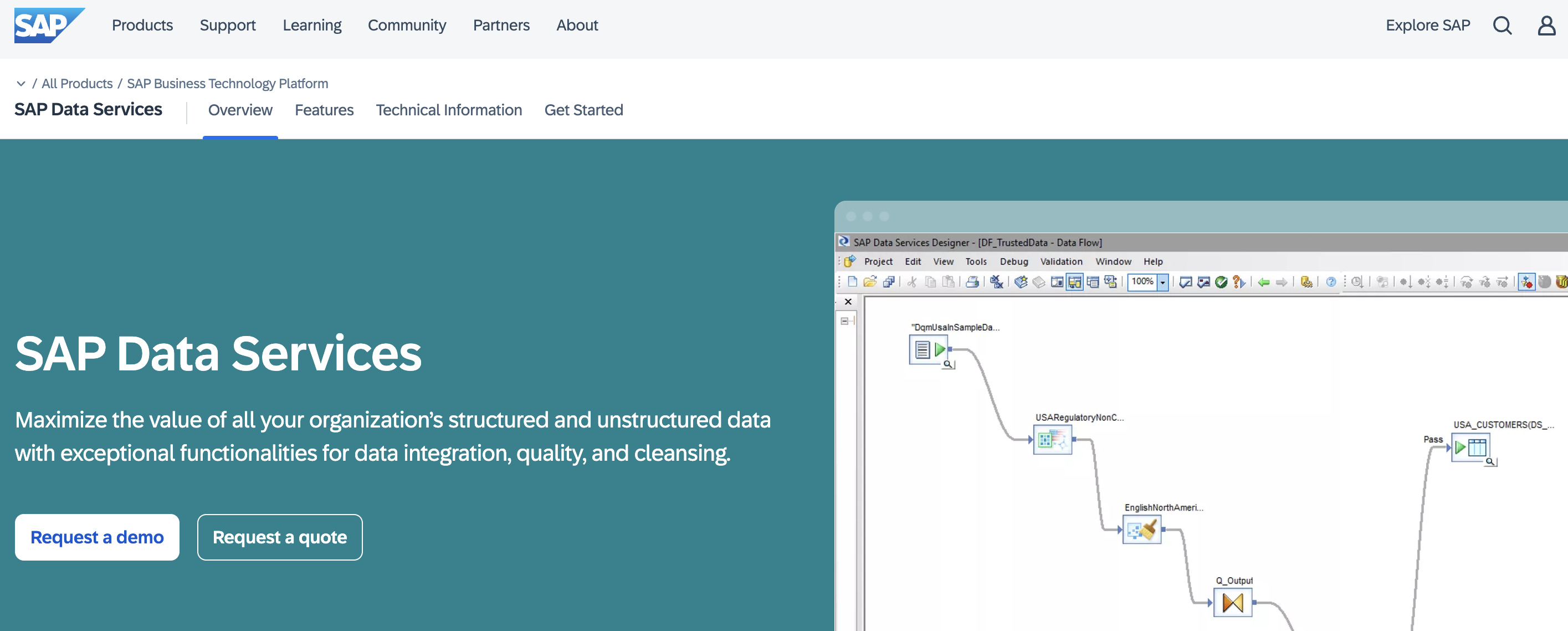
Enhance data exchange within your SAP environment with SAP Data Services. Leverage its robust capabilities, high security, and performance for mission-critical deployments.
Ensure data governance and lineage for complete control. Integrate seamlessly with other SAP applications. Ideal for organizations seeking a user-friendly, cloud-based solution for integrating diverse data sources, even without extensive coding expertise.
Key Features:
- Seamless integration with SAP applications: Optimized for data exchange within the SAP ecosystem
- Comprehensive data integration capabilities: Handles diverse data sources, formats, and transformations
- High security and performance: Ensures data protection and reliable performance for large-scale deployments
Data Integration Tools Comparison
This table provides a detailed comparison of various data integration tools, including their pricing models and G2 scores. It offers a quick overview to help you evaluate and choose the best tool for your business needs.
